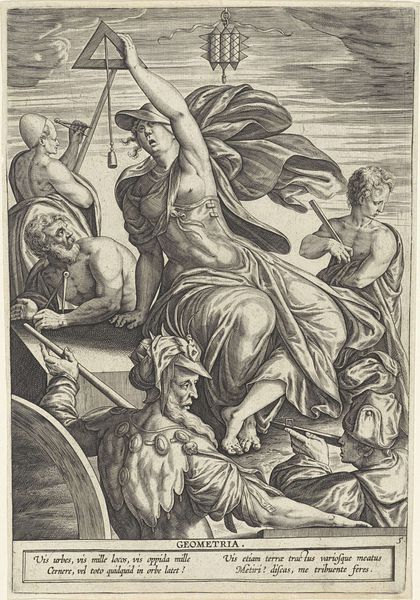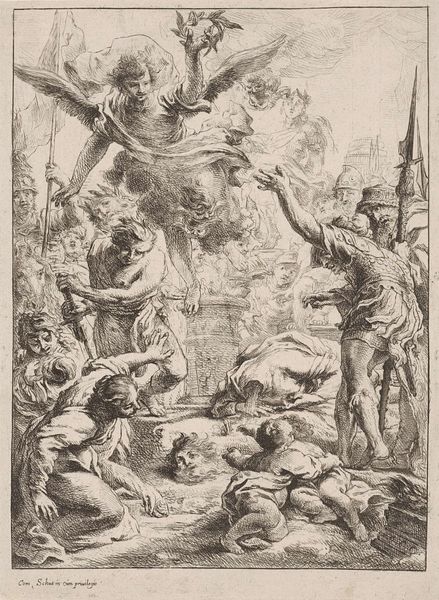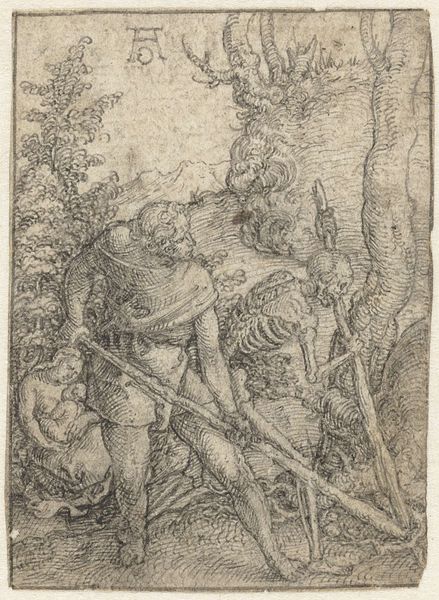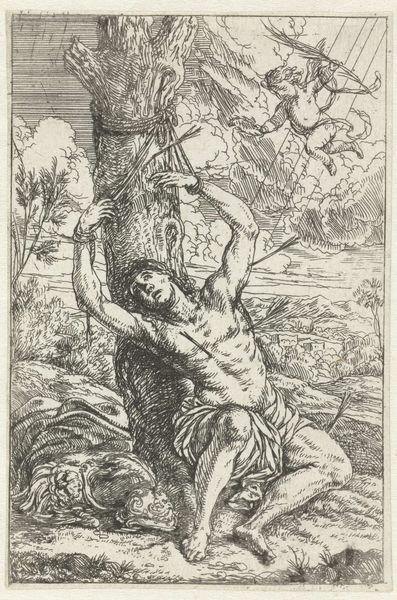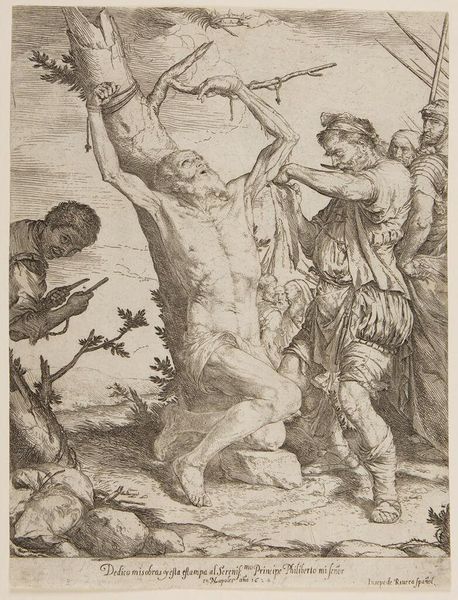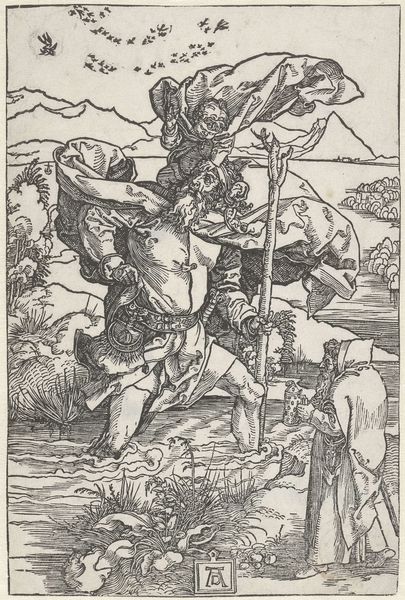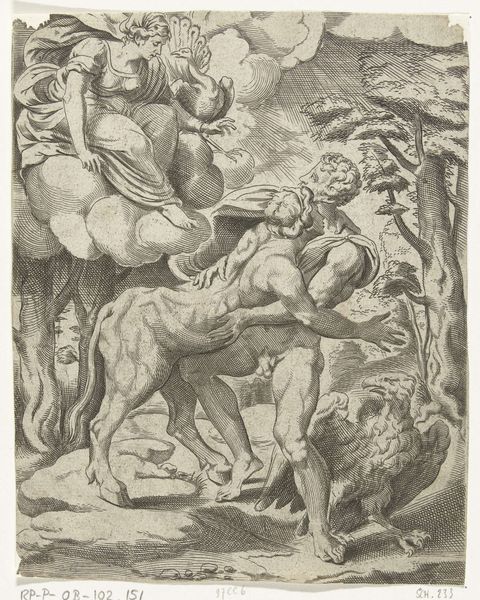
print, engraving
#
baroque
# print
#
landscape
#
figuration
#
history-painting
#
engraving
Dimensions: height 75 mm, width 55 mm
Copyright: Rijks Museum: Open Domain
Wenceslaus Hollar made this etching of Adam and Eve after the Fall sometime in the 17th century. Hollar was a master of this printmaking technique, which involves incising lines into a metal plate, inking it, and pressing it onto paper. Look closely at the image, and you can see the intricate web of lines that create the scene. The lines create the textures of the forest, Adam's musculature as he toils, and Eve’s smooth skin as she cradles her child. The stark contrast between light and shadow intensifies the mood. See how Adam labors in the field, his brow furrowed with exertion. Hollar makes clear the amount of work required to survive after expulsion from Paradise. Note that death itself stands beside him as he works. Eve is depicted with an hourglass – time is running out. Hollar was keenly attuned to the human condition, using his skills with the etching needle to make visible the social consequences of biblical stories. His work reminds us that even seemingly simple prints can convey complex ideas about labor, morality, and the passage of time.
Comments
No comments
Be the first to comment and join the conversation on the ultimate creative platform.

